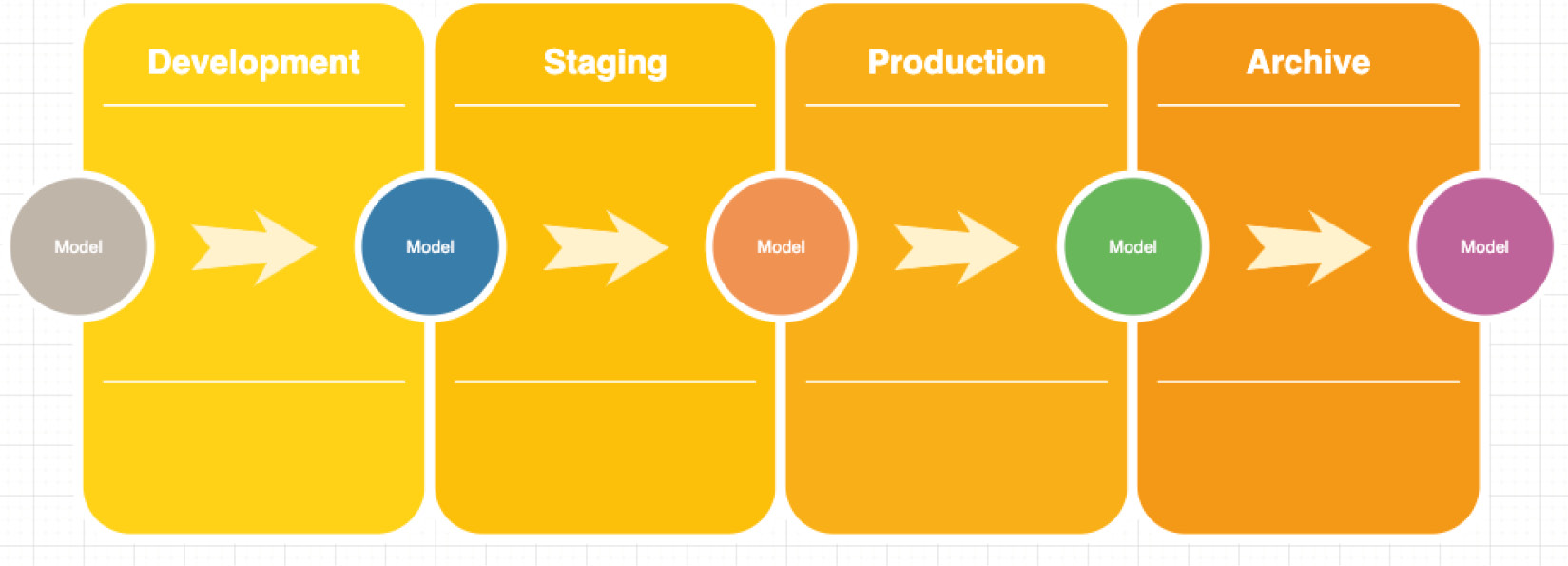Managing the model development life cycle
Managing the model life cycle is quite important when working in a team of more than one model developer. It’s quite usual for multiple model developers to try different models within the same project, and having a reviewer decide on the model that ends up going to production is quite important:

Figure 5.13 – Example of a model development life cycle
A model in its life cycle can undergo the following stages if using a life cycle similar to the one represented in Figure 5.13:
- Development: The state where the model developer is still exploring and trying out different approaches and is still trying to find a reasonable solution to their machine learning problem.
- Staging: The state where the model can be tested automatically with production-type traffic.
- Production: When the model is ready to handle real-life production traffic.
- Archive: When the model no longer serves the business...



